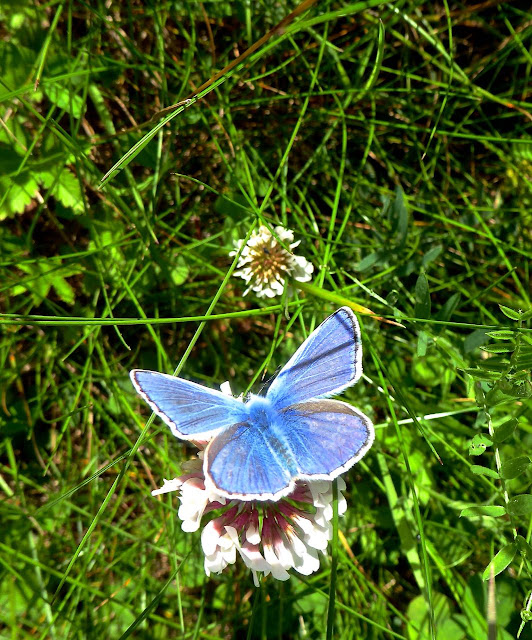I was listening to an interview with an American orthopaedic surgeon, Dr Samer Attar from Chicago, on Radio 4 this week . He has made several visits to Aleppo, working to try and save lives and patch up the bodies of the poor injured, miserable souls who live there, under continual aerial bombardment. If you feel as though you having a bad day, listen to this interview http://www.bbc.co.uk/programmes/p042rbj5 and you will very quickly realise how blessed you are, however bad things may seem. Dr Attar's account of how he spends his days in Aleppo will break your heart. Even more heartbreaking is the reason why he is spending his time there, one of many selfless people, trying to make a difference to a tragic, war-torn part of the world.
By total contrast, and with a heightened sense of how blessed I am, I spent my morning today messing around with wild flowers, sedges, mosses and grasses in the Aberlady Bay. We have about four more designated sites to measure before this year's grassland survey is complete. There are eighteen sites altogether. Some of them take about twenty minutes or more to walk to, but the trek is delightful, starting with a footbridge over the tidal channel.
out along the path lined with meadow sweet, and further along, wild thyme, bird's foot trefoil and harebells.
I am not good with butterflies. I can only recognise a handful of the best known ones, but I do know the glorious common blue
and this is the dark green fritillary butterfly. It doesn't look remotely green to me, but I believe it takes its name from the colour on the underside of the wing, as opposed to the top, which starts off as a lovely orange, and then fades as the butterfly ages - as this one has done.
It was a beautiful clear morning, after heavy overnight rain, and Edinburgh and Arthur's Seat were easily visible, about eighteen miles away.
Then along grassy paths
before striking off into the undergrowth to reach the OS co-ordinates, accurately tracked by the GPS gadget thingy, guiding us to the location of today's survey site. Left to my own devices I would never find it, but luckily survey colleagues are much more clued up than I am with these bits of technology. My forte is confined to identifying the wild plants! Today's site was full of pennywort, ragged robin, marsh bedstraw, yellow rattle, hairy vetch, grass of Parnassas, yellow vetchling, marsh orchid, sedges, grasses and all sorts of other lovely stuff.
On the far side of the dunes, we could hear the surf breaking. With the sun on our backs, wild flowers at our feet and seabirds calling, we were lucky to be in one of the most blissful places on the planet.
By total contrast, and with a heightened sense of how blessed I am, I spent my morning today messing around with wild flowers, sedges, mosses and grasses in the Aberlady Bay. We have about four more designated sites to measure before this year's grassland survey is complete. There are eighteen sites altogether. Some of them take about twenty minutes or more to walk to, but the trek is delightful, starting with a footbridge over the tidal channel.
out along the path lined with meadow sweet, and further along, wild thyme, bird's foot trefoil and harebells.
I am not good with butterflies. I can only recognise a handful of the best known ones, but I do know the glorious common blue
and this is the dark green fritillary butterfly. It doesn't look remotely green to me, but I believe it takes its name from the colour on the underside of the wing, as opposed to the top, which starts off as a lovely orange, and then fades as the butterfly ages - as this one has done.
It was a beautiful clear morning, after heavy overnight rain, and Edinburgh and Arthur's Seat were easily visible, about eighteen miles away.
before striking off into the undergrowth to reach the OS co-ordinates, accurately tracked by the GPS gadget thingy, guiding us to the location of today's survey site. Left to my own devices I would never find it, but luckily survey colleagues are much more clued up than I am with these bits of technology. My forte is confined to identifying the wild plants! Today's site was full of pennywort, ragged robin, marsh bedstraw, yellow rattle, hairy vetch, grass of Parnassas, yellow vetchling, marsh orchid, sedges, grasses and all sorts of other lovely stuff.
On the far side of the dunes, we could hear the surf breaking. With the sun on our backs, wild flowers at our feet and seabirds calling, we were lucky to be in one of the most blissful places on the planet.










We are certainly blessed...
ReplyDeleteLovely photos :)